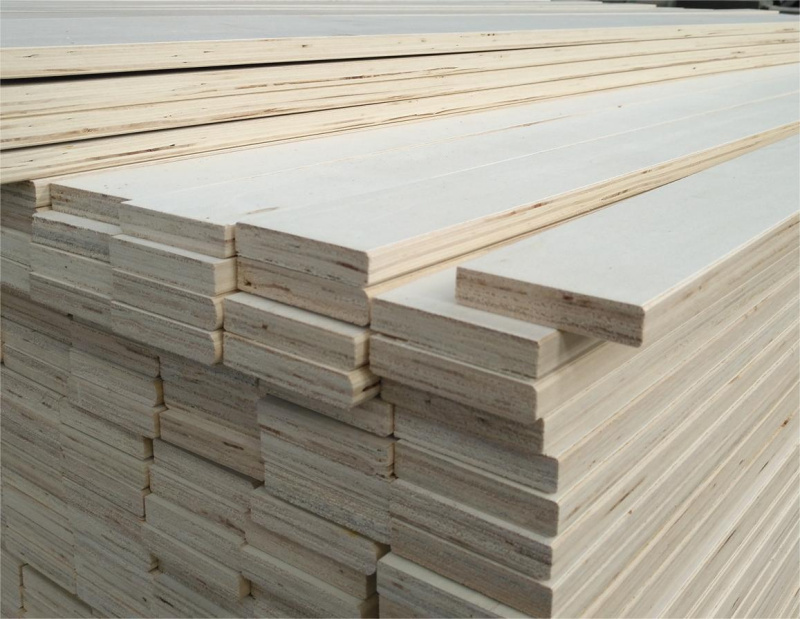Their names are different, the structure of the board is also different, and the compressive strength and firmness are different.
LVL, LVB, and plywood are all multi-layer boards, which are made by glue and pressing multiple layers of wood veneer.
According to the horizontal and vertical directions of the wood veneer arrangement, it can be divided into LVL and plywood.
Laminated Veneer Lumber, also known as LVL (Laminated Veneer Lumber), is a type of veneer made from raw wood by rotary cutting or planing. After drying and gluing, it is assembled in the direction of the grain and then hot pressed and glued. It has structural characteristics that solid wood sawn timber does not have: high strength, high toughness, good stability, and precise specifications, which are three times higher in strength and toughness than solid wood sawn timber. This product can be used for building template components, building beams, carriage panels, furniture, flooring, room decoration wooden keel, and packaging materials, with a wide range of applications.

The low-end ones are generally used to make LVL Scaffolding Planks , LVL Formwork Beams, furniture, door core panels, and product packaging, while the high-end ones are used to make beams, columns, and Structural LVL Beams for wooden structures.
LVL is all arranged in the same direction, while plywood is arranged in one horizontal and one vertical direction. The two types of boards have different structures and performance differences, each with its own focus and toughness stability, which can be checked.

LVB is a method of assembling plywood veneers ,also has a different arrangement of wood veneers. However, the number of wooden veneers arranged horizontally and longitudinally each time is not evenly distributed, which is determined according to specific needs (such as 3 horizontal, 2 vertical, and 3 horizontal)
If the thickness is relatively thin (usually below 25mm), then LVB is generally used, because adding transverse veneer can control the width deformation of the board to a certain extent. If there is a high requirement for strength, then it is best to use LVL structure. There are generally two types of forces on LVL: front and side, and there are generally two types of strength testing: static bending strength and elastic modulus

Their difference usually can be conculed as follows :
Usage: LVL veneer laminated timber is mainly used in buildings and wooden structures; Plywood is mainly used for decoration, furniture, and packaging. Of course, some factories produce LVL such as poplar, which can also be used in furniture, decoration, and packaging.
Structure: LVL laminated veneer and Plywood are both made of wood veneer through hot pressing and bonding, but the arrangement direction of the veneer is different. All LVL veneers are arranged in the same direction along the grain, and the direction of adjacent wood veneers is parallel; Plywood is arranged vertically and horizontally, with adjacent layers of wood veneers oriented vertically.
Appearance: On the one hand, the structure is different when viewed from one side, and on the other hand, the Plywood surface and bottom are generally made of thin wood skins such as Okoume, Bintangor, Red Oak, Ash, etc, which are very beautiful and emphasize decoration; LVL laminated veneer, as a building or structural material, emphasizes strength and deflection, but does not have high requirements for panels.
Material: LVL laminated veneer is mainly made of pine wood+phenolic resin (waterproof, formaldehyde release E0), while Plywood is generally made of poplar/eucalyptus wood+MR glue (generally moisture-proof, formaldehyde release E2, E1, E0).

The biggest difference between the two lies in the formation, hot pressing, and post processing of the veneer. From the perspective of production techniques, LVL boards are more complex in production and processing procedures, while plywood is relatively simple.
The differences in preliminary processing and production determine the different product utility between the two. Compared to plywood, LVL board has more advantages in strength, stability, processability, flame retardancy, sound insulation, and other aspects.
Post time: Aug-22-2023
